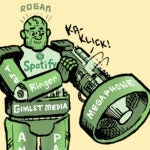 Brave, a privacy-centric web browser, launched its advertising and user rewards platform on Wednesday.
Brave, a privacy-centric web browser, launched its advertising and user rewards platform on Wednesday.
The Brave browser debuted three years ago and now has more than 9 million users. Its co-founder and CEO Brendan Eich created JavaScript and co-founded Mozilla, which operates the Firefox browser.
The new Brave ads are more like browser notifications than typical display inventory. Users opting into Brave Rewards will see 60-70 character messages during a browser session, and receive 70% of the revenue from the ad, with the other 30% going to Brave.
Brave’s advertisers and users spend or receive money in Basic Attention Tokens (BATs), a cryptocurrency created by Brave. BATs can’t be refunded for money, but with the launch of the Rewards program, Brave is bringing on partners that could turn the tokens into credit or other purchases.
For instance, Brave is working with the rewards program TAP Network, which verifies ad engagements or shopping at certain merchants. Users accrue points to redeem with retailers or travel and hospitality chains within the TAP Network, just one avenue for BATs to return actual value for Brave browser users. TAP Network CEO Lin Dai added the network will also bring advertisers to the new browser ad product.
TAP Network has a similar core audience as Brave, skewing male, young and tech-savvy, who actively choose to block most data-driven online advertising, Dai said. This means many advertisers in categories like gaming, entertainment and fast-food restaurant chains need alternatives to reach those consumers online. WarnerMedia and Twitch, two of TAP Networks’ enterprise partners, have already piloted Brave ad campaigns, he said, and others are testing campaigns now.
The Brave ads are meant to be non-disruptive, so they won’t cover content and unlike search campaigns or other web ads they aren’t activated by search queries or page loads.
But they are targeted and data-driven, since Brave knows a lot about the user, Eich said, like which shopping tabs remain open without a transaction, or if someone has searched and researched a travel destination. He said those browser signals might prompt a notification ad the next day.
Companies will be able to audit campaigns and “compare notes” with Brave, Eich said, but third-party tracking and ad verification technology can’t be embedded in the browser.
Publishers and other browsers rely on advertising technology for data-driven ads, Eich said. A part of Brave’s pitch is to show that ads can be targeted and effective without the current ad serving and third-party tracking ecosystem, which is the entry point for fraud and malware, he said, not the browser itself.
Brave has tested publisher-based ads, where the browser assigns ads to the page instead of the typical publisher-ad server arrangement, and in those tests the publisher takes 70% of revenue and Brave and the user split the remainder. Brave is also trying to sign up media companies by letting users tip or allocate part of the revenue from their rewarded web viewing to specific publishers or content creators.
Brave’s verified publisher list skews toward ad-free or philosophical outlets, like wikiHow and the crypto media company Coindesk. News companies including Vice and The Guardian are also partners.
“Publishers and browsers are beholden to an ad tech model based on 90’s-era web technology,” Eich said. “We want show them and users especially that there is another model for how this can work.”













